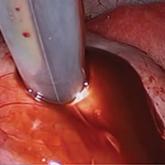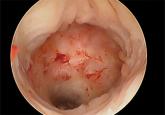Article
Hysterectomy in patients with history of prior cesarean delivery: A reverse dissection technique for vesicouterine adhesions
- Author:
- Camran Nezhat, MD
- Mailinh Vu, MD
- Nataliya Vang, MD
- Edzhem Tombash, MS3
- Azadeh Nezhat, MD
Vesicouterine adhesions resulting from prior CDs or other surgeries can distort the pelvic anatomy and present challenges during...
Article

A patient with severe adenomyosis requests uterine-sparing surgery
- Author:
- Camran Nezhat, MD
- Michelle A. Wood, DO
- Megan Kennedy Burns, MD, MA
- Azadeh Nezhat, MD
Combined laparoscopy and, when necessary, minilaparotomy is the authors’ preferred technique. It can relieve many symptoms of...
Video

Laparoscopic excision of type I and type II endometriomas
- Author:
- Frances Farrimond, BA
- Rebecca Falik, MD
- Anjie Li, MD
- Azadeh Nezhat, MD
- Camran Nezhat, MD
News

Cesarean scar defect: What is it and how should it be treated?
- Author:
- Camran Nezhat, MD
- Lindsey Grace, MD
- Rose Soliemannjad, BS
- Gity Meshkat Razavi, MD
- Azadeh Nezhat, MD
Hysteroscopic resection and laparoscopic repair can reduce a woman’s symptoms arising from cesarean scar defect. The technique of choice depends...
